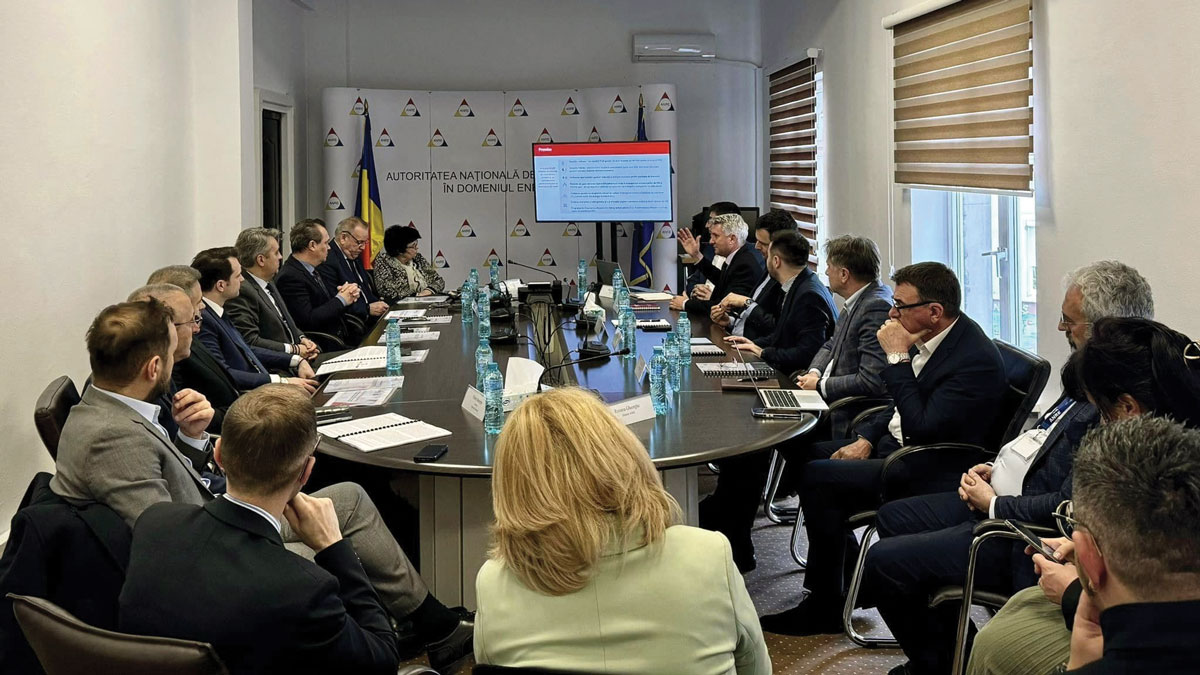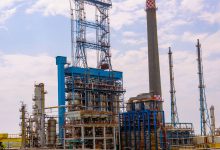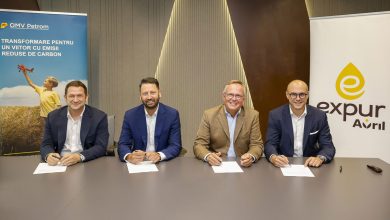20HyGrid Project Successfully Completed
Delgaz Grid, a member company of the E.ON Romania Group, presented to representatives of the Ministry of Energy and ANRE the final conclusions of the 20HyGrid pilot project, which tested, both in laboratory conditions and in the field, the technical feasibility of supplying homes with a mixture of natural gas (80%) and hydrogen (20%) through the current natural gas infrastructure, in order to identify a solution for the partial decarbonisation of the heating sector.
The main conclusion of the project, carried out for the first time in Romania, is that the use of the mixture in existing customer distribution networks, installations, and appliances, without requiring any modification, is technically possible and without additional risks compared to the use of natural gas.
The main components of the existing gas distribution network are already hydrogen ready. At pressures below 16 bar there are no fundamental limitations to hydrogen supply in terms of sealing, materials, and network element functionality.
At the same time, the concentration of the relevant flue gas components, carbon monoxide and nitrogen oxide, decreased significantly compared to that recorded for 100% natural gas. In the case of condensing boilers, the carbon monoxide concentration decreased with values between 23-52%, respectively with values between 30-50% for the nitrogen oxides concentration, these being average values for all tested condensing boilers, at minimum and maximum flow rates. In the case of conventional, non-condensing boilers, the emission reduction values are lower, due to older manufacturing technology.
“Green gases improve people’s lives, providing even better comfort in the long term because they also protect the environment. The 20HyGrid project shows that our natural gas distribution networks have a key role to play in transporting green gases to industry, households and wherever they are needed. We need to act now, together with the authorities and other market players, to harness the huge potential and all the specific advantages Romania has to become a regional hydrogen hub, a relevant player in the market, meeting the conditions across the value chain of the new energy vector,” said Volker Raffel, CEO of E.ON Romania.
“The results of the pilot project are encouraging and give us very good prospects for achieving Romania’s targets under the European Union’s energy and climate policy. Through the National Recovery and Resilience Plan, the Ministry of Energy is finalising the strategic and legislative framework facilitating investments in green hydrogen production and use. At the same time, we have earmarked funding of over EUR 1 billion until 2030 from the Modernisation Fund and the NRRP to support investments for the development of the entire renewable hydrogen value chain,” Energy Minister Sebastian Burduja pointed out.
“An important step in the energy transition is the deployment of hydrogen technologies. We welcome with great interest the project developed by Delgaz Grid/E.ON Group, because it can provide the practical basis for the transposition of regulations in this field, a new field in Europe that requires a careful approach to technical conditions and specific standards to ensure safe operating conditions. It is a starting point in the use of a mixture of 20% hydrogen and 80% natural gas in the distribution networks in strict compliance with all technical and safety conditions for the population,” said George Niculescu, President of the National Regulatory Authority for Energy (ANRE).
“The time is right to take advantage of hydrogen’s potential to play a key role in addressing the critical challenges of the energy transition. 20HyGrid has demonstrated that we can use Romania’s natural gas infrastructure, over 70,000 kilometres long and serving 4 million homes, to harness hydrogen energy, mixed with natural gas in a first stage, safely and efficiently for human benefit,” added Cristian Secosan, CEO of Delgaz Grid.
The appliances tested, more than 260 in total – condensing and conventional boilers, convectors, hot water preparation appliances (APAC), stoves, burners in heating and cooking stoves, worked properly, with no technically relevant differences compared to the behaviour when using natural gas in terms of stability, noise etc. Several models of condensing boilers (from different manufacturers) have been tested and have worked without problems even with natural gas mixtures and higher volumes of hydrogen in natural gas, i.e. 30 and 35%.
All atmospheric burners behaved similarly when burning with natural gas and with a mixture, with no differences in appearance, stability, flame uniformity, noise, etc. and no technical operating problems at both minimum and maximum flow.
“The 20HyGrid pilot project, along with other pilot projects around the world, are a bridge to the transition to hydrogen grids in public green gas supply. In order to reach the climate neutrality target, it is imperative to develop funding programmes that support the conversion and modernisation of natural gas infrastructure for the transmission and distribution of climate neutral gas,” added Cristian Calin, PhD, Gas Technical Manager and 20HyGrid project coordinator.
Delgaz Grid intends to start other pilot projects in this regard, as the appropriate legislative framework needs to be developed as soon as possible. The company plans to carry out several pilot projects with a mixture of natural gas and hydrogen in other areas of interest, for example supplying non-household consumers, carrying out pilot projects for injecting biomethane into the natural gas distribution system and developing other decarbonisation solutions such as reducing methane emissions, green gas heat pumps.
A challenge for the future will be the need to adapt the networks/user installations, but especially the user appliances for 100% vol. H2, since above a 30% hydrogen content in natural gas, modifications of existing utilisation devices are required, directly proportional to the increase of the H2 content in the mixture. Therefore, above this percentage, intermediate H2 weights between 30 and 100% are not justified, but a direct switch to 100% hydrogen. To this end, the development of new burner construction technologies is a must for the next step in the heating market.







